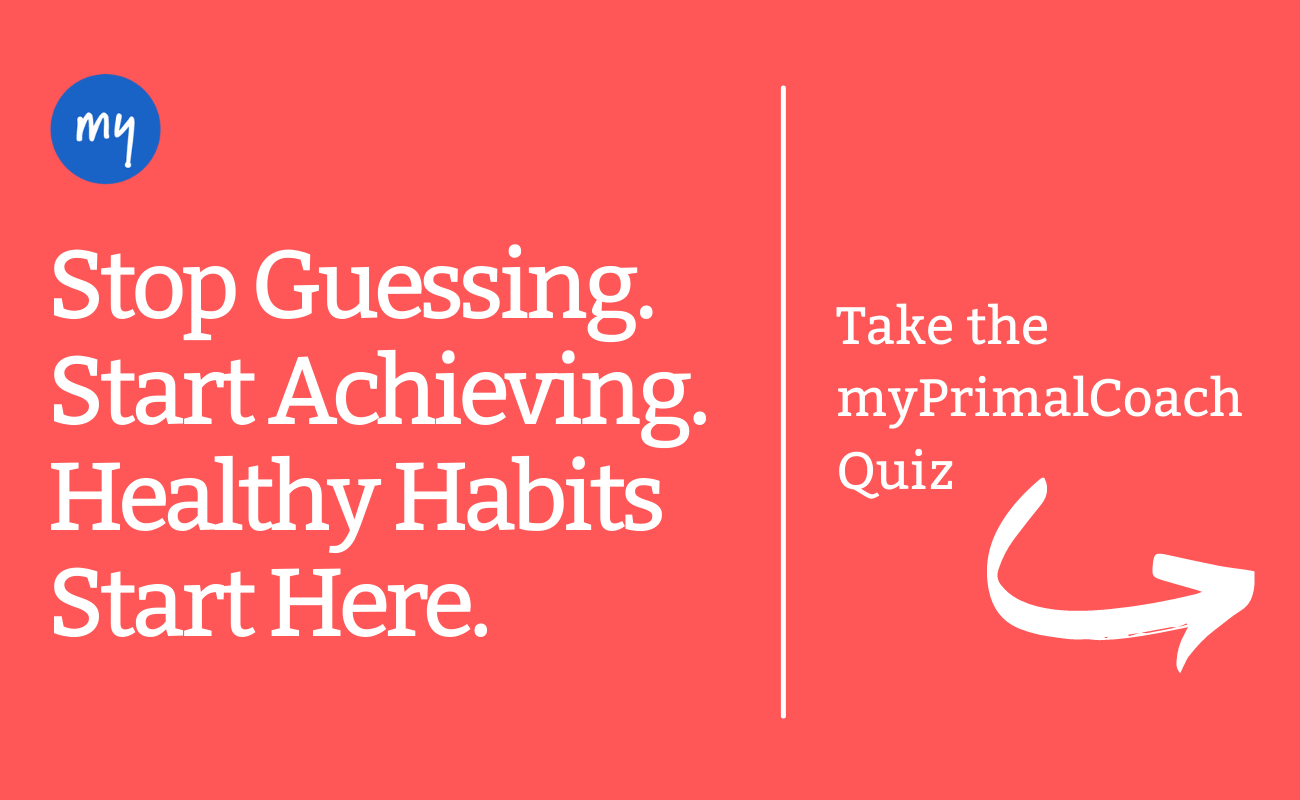What's the point of living longer, if you're not healthy enough to enjoy it? This is why VO2 max and longevity go hand in hand. We're no longer in pursuit of simply living longer. We want to live healthier, for longer.

VO2 max and longevity are the perfect match if your goal it to live healthier for longer.
The modern definition of a long life includes one lived with vitality and free from debilitating disease. At the heart of this quest for longevity lies a powerful biomarker: VO2 max.
This measure of your body's maximum oxygen consumption during intense exercise is not just a metric for elite athletes. It’s a key indicator of cardiovascular fitness and a pretty significant predictor of longevity.
Let’s explore the connection between VO2 max and longevity and how improving your aerobic capacity can lead to a life lived not just longer, but better. But first, it’s important to unpack what VO2 max is, its impact on overall health, and strategies to enhance it.
What Is VO2 Max?
VO2 max means your maximum oxygen consumption. It measures the maximum amount of oxygen your body is capable of using during intense exercise. It is a key indicator of your aerobic fitness level. Specifically, it is a measure of oxygen consumed per minute per kilogram of body weight, expressed in milliliters. VO2 max reflects your body's capacity to take in, transport, and use oxygen.
VO2 max is an important metric because it’s a strong indicator of cardiovascular fitness and your aerobic endurance. A higher VO2 max generally means better heart and lung function. It is also indicative of a better ability to sustain physical activity and is tightly linked to health and longevity.
What Is Longevity?
By a standard definition, longevity refers to the length of a person's life. However, the more current-day use of the term encompasses more than just the number of years lived. Longevity, as a buzzword emphasizes not just the years but the quality of those years. Longevity is associated with life spent in good health, free from chronic disease and disability. It is not simply about living longer, but about living healthier and for a longer period.
Longevity is influenced by multiple factors:
- Genetic predispositions can impact lifespan by making individuals more susceptible to certain conditions.
- Lifestyle choices, including diet, exercise, sleep, and stress management, also play a critical role in maintaining health and longevity.
- Environmental factors, such as access to quality healthcare, significantly affect longevity as well.
- Social connections and supportive networks can contribute to overall well-being and are increasingly recognized as a key component of longevity.
VO2 Max and Longevity
VO2 max is significantly linked to overall health and longevity. Research has demonstrated that higher VO2 max is a strong predictor of longevity, independent of other risk factors. Individuals with higher VO2 max tend to have a lower risk of all-cause mortality. Meaning, they are less likely to die from any cause.
The two are connected on a few fronts, including:
Cardiovascular Health
A higher VO2 max reflects a more efficient cardiovascular system. Meaning, your heart and lungs are better at delivering oxygen to your muscles. This translates to a reduced risk of cardiovascular diseases, such as heart disease and stroke, which are leading causes of death.
Metabolic Health
Improved VO2 max is associated with better metabolic health. This includes improved insulin sensitivity and blood sugar regulation. Better metabolic health can help prevent or manage conditions like Type 2 diabetes and metabolic syndrome, which are also linked to reduced longevity.
Reduced Risk of Chronic Diseases
Studies, such as a large meta-analysis published in JAMA, have shown a strong inverse relationship between VO2 max and the risk of various chronic diseases, including certain cancers, respiratory diseases, and neurodegenerative disorders. Essentially, higher aerobic fitness is associated with a lower risk of developing these conditions.
Quality of Life
Maintaining a good VO2 max throughout life contributes to better daily functioning, allowing you to perform activities with greater ease and independence. This contributes to a higher quality of life, especially in older age.
How to Measure Your VO2
Measuring VO2 max can be done through a handful of different methods. They range from highly accurate lab tests to estimations you can perform yourself:
Laboratory Testing
The most accurate way to measure VO2 max is done in a laboratory setting. You will exercise on a treadmill or stationary bike while wearing a mask that measures your oxygen intake and carbon dioxide output. The intensity of the exercise is gradually increased until you reach your maximum capacity. This method of measuring provides precise data and is often used for athletes and in research settings.
Fitness Trackers and Smartwatches
Many wearable fitness devices also provide estimates of VO2 max. They generally use algorithms that analyze your heart rate, pace, and other metrics. While not as accurate as lab testing and their validity can vary, these estimations can provide a useful gauge of your fitness level. Most importantly, they can help you track changes and trends over time.
Field Tests and Formulas
Several field tests and formulas can estimate VO2 max without the need for specialized equipment. They include:
- The 1.5-mile run test: This test involves running 1.5 miles as quickly as possible. The time it takes you is used to estimate your VO2 max.
- The Rockport walking test: This test involves walking one mile as quickly as possible. The time taken and your heart rate are used in a formula to estimate VO2 max.
- Formulas based on heart rate: Some formulas use your resting and maximum heart rate to estimate VO2 max.
Lab testing is the gold standard and most precise method for measuring VO2 max. However, the alternate methods listed above can still provide a valuable estimate of your aerobic fitness. Regardless of the method used to measure VO2 max, consistency in the testing conditions is important for tracking changes and improvements over time.
5 Ways to Improve Your VO2 Max and Longevity
Improving your VO2 max is an efficient way to enhance your cardiovascular fitness and overall health.
Here are five ways you can improve your VO2 max and longevity :
1. High-Intensity Interval Training (HIIT)
This is considered one of the most effective methods for improving VO2 max and longevity. HIIT involves short bursts of intense exercise followed by brief recovery periods. This type of exercise pushes your body to its limits, helping increase VO2 max.
Examples of HIIT exercises include sprinting intervals, hill repeats, and high-intensity cycling, or spinning.
2. Endurance Training
While HIIT is highly effective, steady endurance training also plays a crucial role. Lower-intensity workouts for a longer period of time, like running, swimming, or cycling, can help improve your body's utilization of oxygen over extended periods. Combining both HIIT and endurance training is a well-rounded approach.
3. Progressive Overload
By gradually increasing the intensity, duration, or frequency of your workouts over time, you challenge your body to continuously adapt and improve. For example, gradually increase the distance you run, the speed you cycle, or the number of intervals you perform in a workout session.
4. Consistency
Exercise is important for improving VO2 and longevity, but keeping it consistency is what’s key. Aim for at least three to four workouts per week. Consistency allows your body to adapt and make sustainable improvements.
5. Recovery
Rest and recovery are essential for improving VO2 max and longevity. Allowing your body time to recover between workouts helps prevent overtraining and avoid injury. Proper sleep, nutrition, and hydration also play vital roles in recovery.
By consistently implementing these strategies, you can effectively improve your VO2 max and enhance your overall fitness.
What Is a Good VO2 Max By Age?
As we age, our VO2 max tends to decline. This reduction is typically around 10 percent per decade after the age of 25, and approximately 15 percent between the ages of 50 and 75. It is primarily attributed to a decrease in maximum heart rate, reduced cardiac output, and a diminished ability of the muscles to extract and use oxygen. However, this decline is not an inevitable slide into weakness and poor health.
While aging brings about a drop, regular exercise plays a pivotal role in slowing down the rate of VO2 max reduction. Engaging in consistent aerobic exercise, even in later life, can help maintain the efficiency of the heart and lungs. Even small increases in activity can have a large impact on health.
Table 1: Women's average VO2 max levels
Women | |||||
|---|---|---|---|---|---|
Age (yrs) | ≤29 | 30-39 | 40-49 | 50-59 | 60-69 |
Poor | ≤23.9 | ≤19.9 | ≤16.9 | ≤14.9 | ≤19 |
Fair | 24-30.9 | 20-27.9 | 17-24.9 | 15-21 | 13-20.9 |
Average | 31-38.9 | 28-36.9 | 25-34.9 | 22-33 | 21-32.9 |
Good | 39-48.9 | 37-44.9 | 35-41.9 | 34-49 | 33-36.9 |
Excellent | 49 | 45 | 42 | 40 | 37 |
Men | Header | Header | Header | Header | |
|---|---|---|---|---|---|
Age (yrs) | ≤29 | 30-39 | 40-49 | 50-59 | 60-69 |
Poor | ≤24.9 | ≤22.9 | ≤19.9 | ≤17.9 | ≤15.9 |
Fair | 25-33.9 | 23-30.9 | 20-26.9. | 18-24.9 | 16-22.9 |
Average | 34-43.9 | 31-41.9 | 27-38.9 | 25-37.9 | 23-35.9 |
Good | 44-52.9 | 42.49.9 | 39-44.9 | 36-42.9 | 36-40.9 |
Excellent | 53 | 50 | 45 | 43 | 41 |
Summary
The relationship between VO2 max and longevity is undeniable. A higher VO2 max significantly reduces the risk of chronic diseases and all-cause mortality. Ultimately, an optimal score contributes to a longer, more vibrant life. Lifestyle choices, particularly exercise, are a powerful tool you can use to maximize your VO2 max and longevity.
By understanding and actively working to enhance our VO2 max through consistent and varied training, you can directly impact your healthspan. Measuring VO2 max, whether through lab tests or estimations, can provide valuable insight into your fitness levels and can help you track your progress.
A myPrimalCoach is always here to help. A coach can work with you to optimize your VO2 max and longevity by guiding you on your fitness journey.

